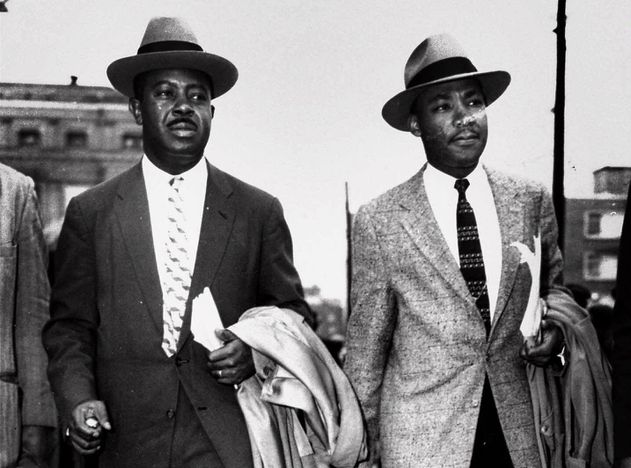Throughout February, I dove into the life and legacy of one of the Civil Rights Movement's most understated lieutenants: Ralph David Abernathy. As a WWII veteran, Ralph is part of the venerable Americans who made up the Greatest Generation. He thought independently. He was principled. He was also the best friend of Martin Luther King Jr. and self-claimed Caleb to Martin's Moses figure. As decisions were made throughout the course of the Civil Rights Movement, Martin and Ralph each played their unique roles in progressing the movement. Martin was clearly the eloquent leader and visionary and Ralph the operator and executor; the man who put the plans to work.
Abernathy’s autobiography titled And the Walls Came Tumbling Down, inspired from the story of Joshua and Jericho, is the story of an Alabama Baptist preacher who had the same visions and ambitions as one of America’s most heroic figures. They met years before the Civil Rights Movement and forged a bond and partnership so strong it transformed an entire nation and spurred legislation towards America’s founding principles of freedom, justice, and democracy. The book starts with David’s upbringing in Alabama, time in the military, and education. After graduating from Alabama State and then Atlanta University (where he and Martin originally met), Ralph went back to Alabama to follow the calling of the church and become a pastor in Montgomery. It was in Montgomery where Ralph and Martin cemented their friendship as Ralph preached at First Baptist and Martin at Dexter Avenue. Nightly they would have dinner with their wives and plan ways to achieve social justice and racial amity. These nights were when the non-violence tactics from Ghandi were studied and analyzed. These were the years of 1950-1955. Ralph was ready to take a leave from First Baptist to get his doctorate but on December 1st of that year, Rosa Parks took the bus ride that started the Civil Rights Movement.
Abernathy wrote the book in a city-by-city, campaign-style starting first with the Montgomery Bus boycott and concluding in the last location of Charleston in 1969. Within those 14 years, he goes through the strategies and tactics to achieve justice in the forms of civil rights including voting, hiring, and desegregation in cities starting in Montgomery, Albany, Birmingham, St. Augustine, Selma, Chicago, Memphis (where MLK Jr. was assassinated) and Charleston. The book is educational on several levels. First the courageous sacrifices made by all the leaders and their safety and their family’s safety. Ralph’s church and house were both bombed. He also went to jail 25 times. Second, as America gets farther and farther away from the time period of the Civil Right Movement, it can seem compressed into a few marches and a glorified, memorable speech on the lawn of the Washington monument, however, the movement was years of work, dedication, and planning to achieve equality. Third, like every movement that rises, it also falls. Ralph is candid about the legacy of the Civil Rights Movement and evolution to the Poor People’s Campaign – particularly in the epilogue where he was voted out of leadership of the SCLC in the mid 70’s.
And The Walls Came Tumbling Down is a story about one of the most under-discussed leaders of the Civil Rights Movement who was there on day one in Montgomery until he held his best friend on the balcony of the Lorraine Motel. His autobiography was published in 1989 and he passed away in 1990. For anyone who wants to learn the inner workings of the Civil Rights Movement, how several leaders, not just him and Martin Luther King Jr. organized a non-violent movement that shifted the consciousness of a nation, I recommend reading And The Walls Came Tumbling Down.

